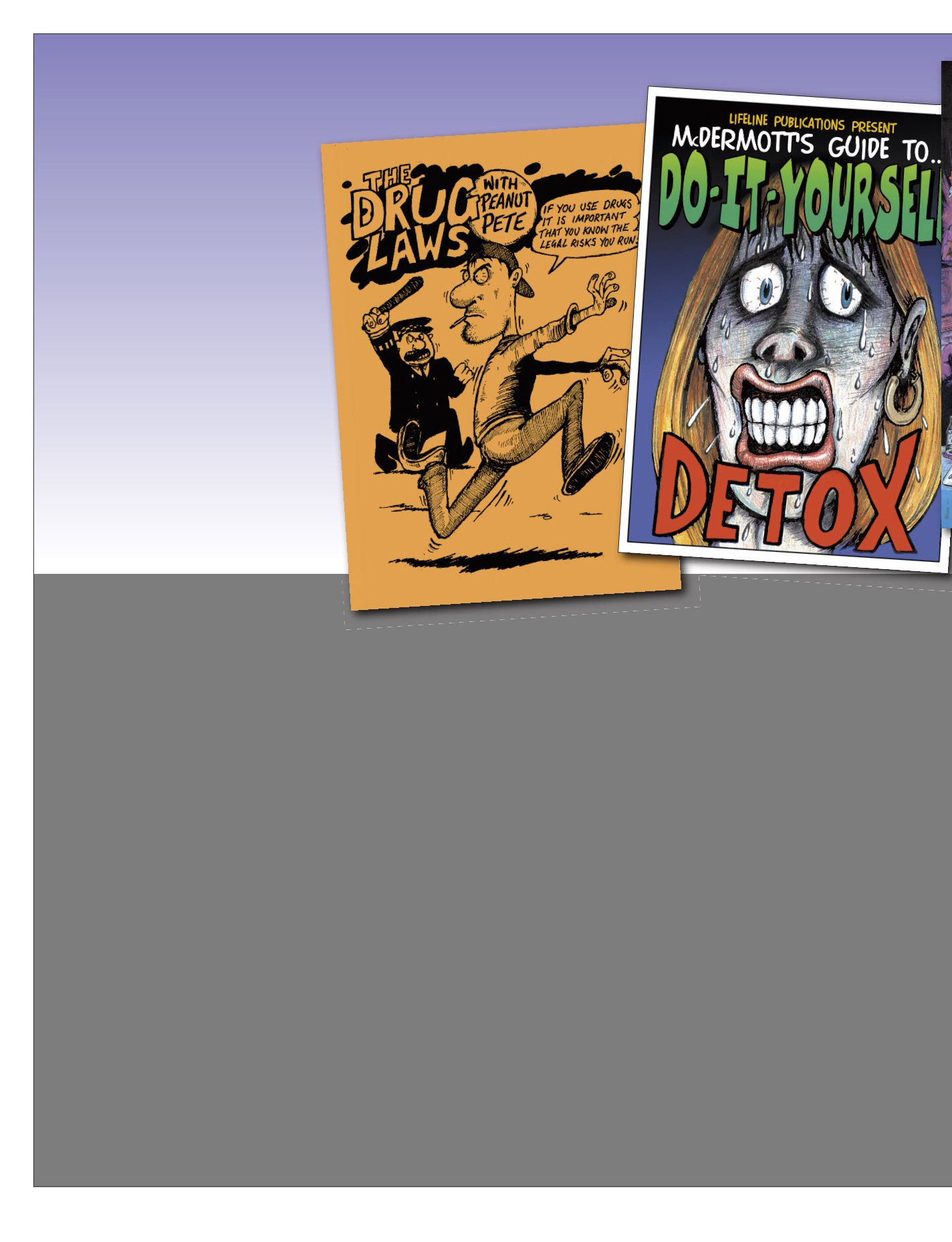
8 |
drinkanddrugsnews
| April 2016
i
n March 1985 I answered an advert in
The Guardian
. A small drugs charity
called Lifeline was looking for an artist, and they gave the job to me. Over
the next 30 years I created a range of internationally acclaimed, and at
times notorious, drug campaigns for the most marginalised and
stigmatised sections of society.
In the mid-1980s, information aimed at drug users consisted of primary
prevention campaigns of the ‘drugs are bad’ ilk and a handful of advice leaflets. The
emergence of HIV (then called HTLV III) required a new public health response.
Tossed like a harm reduction hand grenade into the primary prevention trenches
came the rudest drug campaign anyone had ever seen.
Smack in the Eye
was based on speaking to drug users (a novelty back then) and
asking them what they wanted, found funny and were likely to read, rather than
what was least likely to cause offence. It had quite an impact. It had been banned
by the probation service, reviewed by The
Times Educational Supplement
and had
featured on BBC 1 before the 500 pilot copies of the comic were even distributed. By
the time we had been interviewed by the director of public prosecutions (twice), it
had been discussed in the House of Lords and commended by the WHO. It was
called ‘grossly offensive and pornographic’ and accused of just about every ‘ism’ and
‘obia’ around at the time.
Not only did it contain explicit information on safer drug use and safer sex, it
critiqued many aspects of the drugs field – from some of the more pretentious
extremes of therapy to mass methadone prescribing. We even highlighted one of
the little known but most dreadful consequences of heroin addiction – the delusion
that you can write poetry when you give up!
We had expected to be attacked by the press, but surprisingly this came many
years later (the
Daily Mail
dubbed us a ‘threat to the youth of Britain’). It was our
fellow professionals who both asked the police to arrest us (nobody was really sure
which laws we were breaking but were sure we must be doing something illegal)
and occasionally wrote to us complaining. However, these complaints were far
outnumbered by the ‘fan mail’ we started to get from drug users.
By 1990 the ‘acid house’ (rave) scene was flourishing among a group of young
people using LSD, amphetamine and ecstasy to get off their trumpet and dance all
night to electronic music. We recognised that there was an urgent, unmet need for
accurate harm reduction advice for this group and
Peanut Pete
was designed to
change the image of drug services that were perceived to be ‘just for junkies’.
The leaflets were originally distributed at record shops and hairdressers in
Manchester. They became an instant success with drug users, so we started to sell
them nationally to other services and they sold in their millions, funding our work
and allowing us to keep our editorial independence. They also attracted
considerable national press interest and we were even (briefly) in the government’s
good books when in 1992 the
Peanut Pete
campaign was described by the European
Parliament as ‘by far the best in Europe’ and chosen to represent the UK at the
“European Drug Prevention Week” conference.
One of the first people in Britain to die from ecstasy use was a young girl in a
nightclub in a Manchester, which was at the time christened ‘Madchester’ by the
press. Nobody really knew why the handful of tragic deaths had occurred until we
heard that a toxicologist, Dr John Henry, thought the deaths were due to
overheating. We managed to get hold of his (at the time unpublished) research and
produced
Too Damn Hot
– a leaflet containing the first ever advice to ecstasy users
about heatstroke.
In the early 1990s, we had leaflets distributed by drug workers and volunteers
who worked in nightclubs (such as The Hacienda) and at “raves”. This led to a
campaign of harm reduction information, policy and training around nightclub drug
use we called
Safer Dancing
. It was hugely influential, despite a serious lack of
funds, and became the blueprint for the many initiatives that sprang up, both in the
UK and internationally.
All the publications in the archive were aimed at specific populations of drug
users as diverse as children groomed by paedophiles to professional footballers
(commissioned by the PFA). They were all based on extensive research with these
target populations and we used their expertise. Although there is a long tradition of
Thirty years after
Michael Linnell’s
first graphic
harm reduction
campaigns burst
onto the scene he
recalls the outrage
– and the results –
that spurred
him on
Harm reduction History
A smAck in the eye


